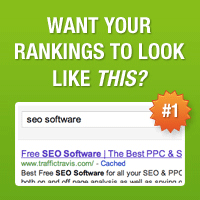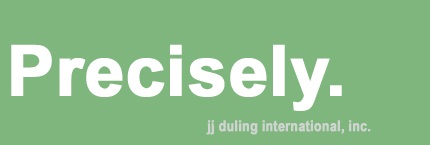|
|
| Search engine optimization
(SEO) is the process of improving the
visibility of a website or a web page in search engines via the
"natural" or un-paid search results. In general, the earlier (or
higher ranked on the search results page), and more frequently a
site appears in the search results list, the more visitors it
will receive from the search engine's users. SEO may target
different kinds of search, including image search, local search,
video search, academic search, news search and industry-specific
vertical search engines. As an Internet marketing strategy, SEO considers how search engines work, what people search for, the actual search terms typed into search engines and which search engines are preferred by their targeted audience. Optimizing a website may involve editing its content and HTML and associated coding to both increase its relevance to specific keywords and to remove barriers to the indexing activities of search engines. Promoting a site to increase the number of backlinks, or inbound links, is another SEO tactic. |
Get Your FREE eBook!
|
Observations and Factors
|
This is not intended to be a complete guide, as SEO can be
complex. Generally: Free traffic generally requires more work than paid traffic.Every free web traffic strategy can (and probably should) be outsourcedThe top organic search results get a LOT more traffic than the paid advertisements.The top 3 organic results get the lion’s share of web traffic. It’s more important than ever to aim for the top 3.Choosing the right keywords to base your site optimization around is an important first step. General or generic keywords are usually not the best approach, and sometimes it’s better to be a little more specific and focus on niche keywords relating to your product or service. Keyword Research (and Competition Analysis) is foundational to good SEO. Objectives of keyword research: 1) Come up with a list of keywords. Free keyword tools: Google keyword tool Traffic Travis 2) How popular is the keyword? 3) How competitive is the keyword? -On Page optimization of the top 3 sites for the keyword -Google PageRank of those sites -Quantity and quality of backlinks to those sites Use Yahoo Site Explorer. |
On Page Optimization Factors:
Domain Name - Use your primary keyword. Hyphens are
optional. Use a top level domain (.com, .org. net). Country domains
can be used if you’re optimizing for your country only.
Page URL - Use the page’s targeted keyword as the
page file name. Hyphens optional.
WordPress makes it easy. See training for permalink setup. If you’ve
already got WordPress posts with non-SEO friendly URL’s, use a
permalink migrator plugin, such as Dean’s Permalink Migration or
Permalinks Moved Permanently.
Title Tag - Use the page’s targeted keyword at the
beginning of the title. If you’re using WordPress, use the
All In One SEO Pack plugin.
Meta Description - NOT generally used for SEO
ranking, but still important. Use your keyword one time, keep an
honest non-spammy description, and make it compelling to entice
clicks.
H1 Tags - Use your targeted keyword within an H1
tag at the top of the page. This can be a headline.
Keyword Usage - Forget about density, frequency,
LSI, etc. Just be sure to use your keyword at least once in the
content, and use it up to several times in a natural way that makes
sense. It may help to make it bold one time.
Images - Use your keyword as the image name, and in
the “alt” text. Just make sure your picture accurately fits the name
and description.
With good image optimization, you can get a lot of extra traffic
from image searches. In general this traffic is known for NOT
converting into sales, but is traffic nevertheless, and in some
cases can be converted.
Site Structure - Your site should be easy to
navigate. Use canonicalization (no duplicate content within your own
site). Front-load your content in the coding of your page (ie. you don’t
want a big navigation menu to be the first thing the search engine robot
sees).
Internal Linking - Use keywords when linking within
your own site.
Site Map - Use an XML sitemap. To make your own, see
the protocol at
sitemaps.org.
Or use one of the many site-map generators, or a WordPress plugin such
as Google XML Sitemaps by Arne Brachhold.
Privacy Policy and Terms of Service - Some people say
this affects SEO, although it is very questionable. But even if it
doesn’t affect SEO, you should still have the proper legal docs on your
site. And on the topic of compliance, you also need to follow Google’s
technical and quality
webmaster guidelines.
“No Follow” Link Attribute - For SEO purposes, it’s
probably best to use “no follow” on your blog comments. Also, you may
wish to use it for affiliate link, and any link to a “bad neighborhood”
(but you shouldn’t be linking to bad places).
Fast Page Load Time - Your site should load FAST. Don’t
bog it down with many plugins and 3rd party apps. Use clean, minimalist
coding.
Original Content - Yes, content is king. Not just for
SEO, but for long term success of any website. Good content does not
inherently bring web traffic; you still have to be a marketer. Good
content is also necessary to decrease your bounce rate (helps with SEO),
increase the time visitors spend on your site, and increase repeat
traffic.
Fresh Content - Posting more frequently can help you
gain authority with the search engines more quickly. And I’m not talking
about auto-blogging. It must be good, original content.
Google’s Starter Guide
Seomoz Beginner’s Guide
Services
 Content
Development & Strategy
Content
Development & Strategy Affiliate
Marketing
Affiliate
Marketing Blog
Consulting
Blog
Consulting SEO
Optimization
SEO
Optimization Social
Media Marketing
Social
Media Marketing Training
Training Website
Design
Website
Design





